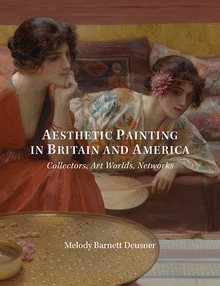Aquatint Worlds
WARNING
You are viewing an older version of the Yalebooks website. Please visit out new website with more updated information and a better user experience: https://www.yalebooks.com
Travel, Print, and Empire, 1770–1820
Douglas Fordham
An illuminating investigation of how aquatint travel books transformed the way Britons viewed the world and their place within it
In the late 18th century, British artists embraced the medium of aquatint for its ability to produce prints with rich and varied tones that became even more stunning with the addition of color. At the same time, the expanding purview of the British empire created a market for images of far-away places. Book publishers quickly seized on these two trends and began producing travel books illustrated with aquatint prints of Indian cave temples, Chinese waterways, African villages, and more. Offering a close analysis of three exceptional publications—Thomas and William Daniell’s Oriental Scenery (1795–1808), William Alexander’s Costume of China (1797–1805), and Samuel Daniell’s African Scenery and Animals (1804–5)—this volume examines how aquatint became a preferred medium for the visual representation of cultural difference, and how it subtly shaped the direction of Western modernism.
In the late 18th century, British artists embraced the medium of aquatint for its ability to produce prints with rich and varied tones that became even more stunning with the addition of color. At the same time, the expanding purview of the British empire created a market for images of far-away places. Book publishers quickly seized on these two trends and began producing travel books illustrated with aquatint prints of Indian cave temples, Chinese waterways, African villages, and more. Offering a close analysis of three exceptional publications—Thomas and William Daniell’s Oriental Scenery (1795–1808), William Alexander’s Costume of China (1797–1805), and Samuel Daniell’s African Scenery and Animals (1804–5)—this volume examines how aquatint became a preferred medium for the visual representation of cultural difference, and how it subtly shaped the direction of Western modernism.
Distributed for the Paul Mellon Centre for Studies in British Art
Douglas Fordham is associate professor of art history at the University of Virginia.
"Historians and art historians of travel, exploration and empire will be indebted to Douglas Fordham’s excellent new book for foregrounding the crucial role played by visual image—and aquatints in particular—n presenting European engagement with the wider world to audiences at home in the period it covers.”—John McAleer, Literary Review
ISBN: 9781913107048
Publication Date: November 19, 2019
Publishing Partner: Distributed for the Paul Mellon Centre for Studies in British Art
Publication Date: November 19, 2019
Publishing Partner: Distributed for the Paul Mellon Centre for Studies in British Art
328 pages, 9 1/2 x 11 1/4
215 color + b/w llus.
215 color + b/w llus.
ADDITIONAL MATERIALS









